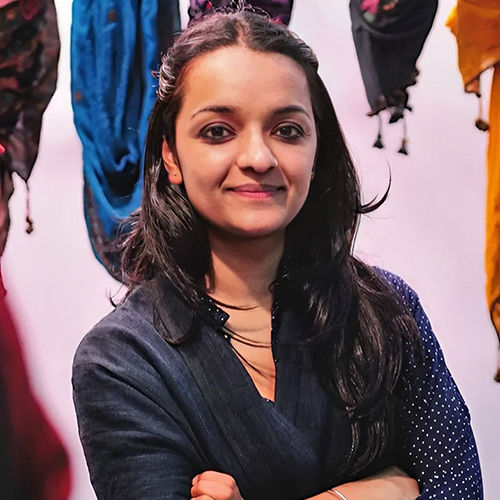
Aneeth Arora
Fashion Designer
Péro
It's our duty to make Indian textiles viable globally
The Woolmark Company has partnered with handmade fashion label Péro and Kullu-based wool weavers' cooperative Bhuttico to create a unique #FarmToFashion collection. Designer Aneeth Arora talks about the inspiration behind the collection and the collaboration with The Woolmark Company.
Fibre2Fashion: Tell us about your autumn/winter collection in collaboration with Bhuttico and Woolmark.
Aneeth Arora:
F2F: What was the inspiration for the collection? What were the main influences in terms of design, look and feel, and mood of the collection?
AA:
The geometric pattern that is seen on the 'pattus' were incorporated in the clothing in the form of engineered textiles, which we made keeping the placement of motifs in mind and how they will show on the garment. The fact that we weaved these Kullu borders was very exciting because we believe in a lot of details. We also use a lot of trims in our clothes and so we develop these tapes in our colours of choice and we use them as trims and ties in our collection.
F2F: What techniques have you used for the collection? How much time did the weaving of fabrics take?
AA:
The fabrics were meticulously woven by the weavers using the extra weft technique where each thread is inlayed with hand to create patterns while weaving the fabric on the loom-a technique as intricate as hand embroidery. Using the same technique, we also designed tapes and borders locally known as kushi, traditionally woven on a special miniature loom. These tapes have been incorporated in this season's clothing, as ties and trims in coordinated tones for a fuss-free approach. Apart from experimenting with traditional weaves, natural textiles are created with speckled effects and soft twists using combinations of varied thicknesses of merino yarn within one weave. We also have handwoven and engineered jacquard houndstooth patterns running alongside our dynamic display of stripes and checks.
F2F: How many styles does the collection have? How have you used merino wool in the collection?
AA:
We have a lot of chunky oversize jackets because we have experimented with very light and very heavy wool. The collection has overalls, dresses, a huge variety of tops and bottoms, jackets and dungarees. We have pretty much covered everything from flowy dresses to very structured jackets within the collection.
F2F: Who is the target buyer for Péro?
AA:
With unparalleled passion for wool and imperfect textures, this womenswear story seamlessly blends the adventurous spirit of The Distinguished Women's delicate grunge look with classic style and tradition, creating a new contemporary dress code yet keeping a sense of history intact. It is all about having to make that leap from being prim and proper to breaking free into a new you. So, every woman who identifies with this aesthetic is our target. This collection crosses the geographic boundaries and given the versatility of merino wool, can be worn by any woman, anywhere in the world.
F2F: How well recognised are Indian weaving techniques globally?
AA:
As designers, it is our duty to make Indian textiles and weaving viable globally. If all the traditional crafts were viable on their own, they would have had an international market already. I feel design intervention is needed everywhere, because the best combination can be that of the craft and design. Now, more people are becoming sensitive towards Indian craftsmanship and textile. We have a long way to go as India has no dearth of traditional craftsmanship. It is a slow process, but we are educating people about these traditional crafts which aren't actually trending. (HO)
Fanny Vermandel
Rahul Mehta
Anurag Batra
Pradip Mehta
Aseem Prakash
Gabi Seligsohn
Rahul Mehta
Abhay Gupta
Arun Sirdeshmukh
Bill D’Arienzo




_8.JPG)








